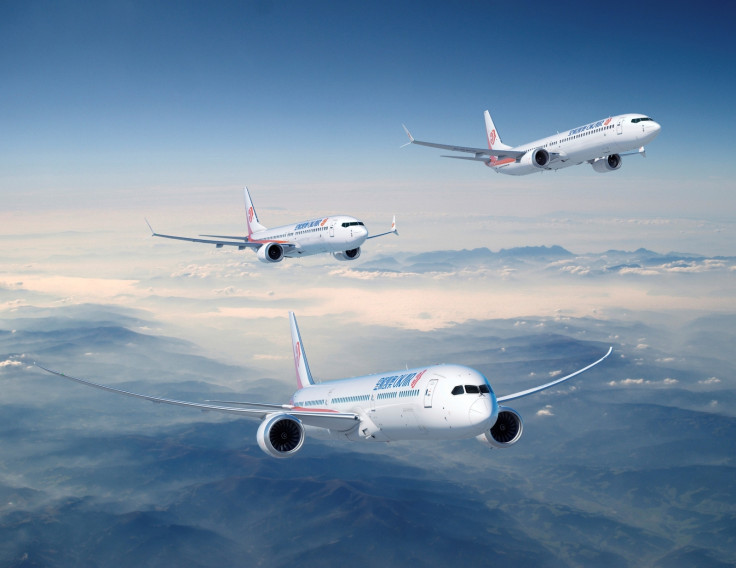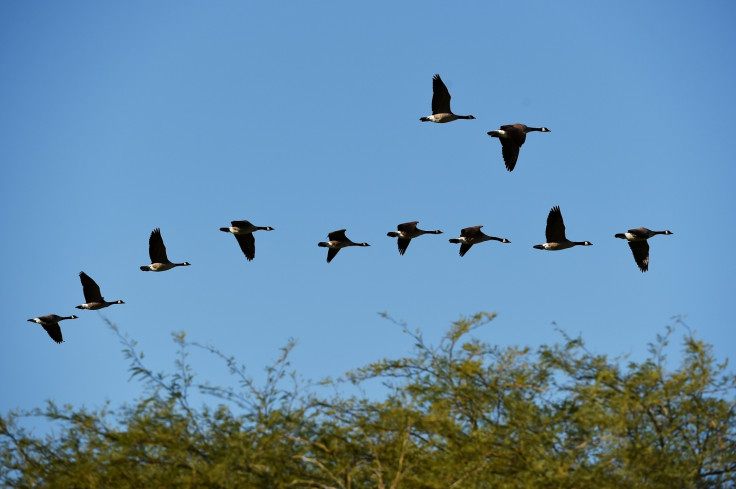Boeing discovers trick that could change the way planes fly - by copying geese
Flying aircraft in a v-formation for 'wake surfing' could make flights more fuel-efficient.
Boeing has looked to the sky and taken inspiration from nature for a potential new trick for how the aviation industry can fly planes to save fuel.
Teaming up with the brains at Nasa, the aerospace manufacturer has discovered that by mimicking Canada geese and flying planes in the migratory birds' recognisable v-shaped formation and cruising in the wake of the aircraft in front planes could make a 10% reduction in fuel.
The technique known as 'wake surfing' or 'vortex surfing' would see planes carefully manoeuvre themselves into the spiralling columns of air that are created by another plane's wingtips in order to benefit from extra lift from the upward section of the cone of air.
The staggered formation would see planes separated at a distance of approximately 4,000ft – more than enough to comply with minimum longitudinal separation – with claims the ride would be smooth, despite the sound of the slightly bumpy operation.
Researchers claim it could provide a leap in efficiency all without the need to invest in expensive new technology, materials or manufacturing.
"Think of a car drafting a truck, or one bike rider drafting another," Mike Sinnett, Boeing's vice president for product development, told Bloomberg. "It essentially allows you, if you are flying in the right spot, to reduce your fuel burn. But you've got to be there for a long time."

The concept has been floating around aviation circles for a number of years with Nasa already having conducted an experimental wake surfing flight using Boeing military transport planes earlier this decade as well as fighter jets showing that formation flying reduced drag by up to 15%.

Nasa believes the aviation industry already has the technology to have planes flying like flocks of geese today as pilots could use the navigation and collision-avoidance systems already installed in current aircraft, rather than wait for new systems to develop.
However, pilots and traffic control around the world could face a turbulent time in order to precisely schedule planes on the same route as well as taking into consideration external factors such as weather and take-off delays. It would also likely involve the agreement of all airlines, which could be challenging in itself.
As Bloomberg reports, wake surfing and flying in formation is more likely to be successful for cargo flights or unmanned aircraft such as Amazon's potential delivery drones. It is also yet to be known what the impact wake surfing could have on the structural stress of civilian aircraft.
Boeing is not the only aerospace manufacturer currently looking into cost-effective ways to increase efficiency with Airbus recently revealing plans to make its A380 superjumbo even bigger by extending its wingspan. The 'winglets' would add an extra 5m in length and could reduce drag to save nearly 4% in fuel costs.
© Copyright IBTimes 2025. All rights reserved.






















